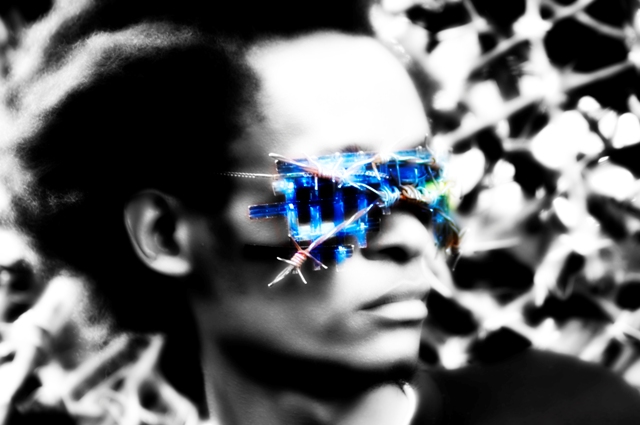News from Civsy, based on generative AI tools and retrieval-augumented real time data searchDespite a decline in revolutionary fervor in recent years, large-scale protests persist in Chile as of January 2025, particularly in Santiago and other major cities. Initially sparked by economic inequality and corruption, the movement has evolved into broader unrest. While past demonstrations saw millions in the streets, recent gatherings have been smaller but still disruptive, affecting daily life, public transportation, and businesses.
The government has responded with curfews, military deployments, and crackdowns on protesters, intensifying tensions. Some demonstrations have turned violent, with clashes between police and activists. Public opinion on the protests remains divided, as some support the movement’s demands while others grow weary of continued instability.
Artists remain active in expressing public sentiment through murals, performances, and music, highlighting the ongoing struggle. With no clear resolution in sight, Chile continues to grapple with deep-rooted social and economic issues, keeping the nation in a state of uncertainty.
The Chile protests have seen a significant involvement of artists, who have used various forms of creative expression to support and amplify the movement. Here are some notable artistic performances during the protests:
1. Feminist Performances: Performance artist Cheril Linett and her collective Yeguada Latinoamericana conducted a series of three performances titled "Estado de Rebeldía" (State of Rebellion). These performances featured young women striding through the streets with skirts rolled around their waists, brandishing mares' tails in front of armed police, military groups, barricades, and government buildings. The highly aestheticized bodies in abject situations created powerful imagery aligned with the protest movement.[1]
2. "Un Violador en Tu Camino" (A Rapist in Your Path): This massive choreographed declaration about the subjugation of women in patriarchal society was created by the collective Las Tesis, consisting of Daffne Valdés, Sibila Sotomayor, Paula Cometa, and Lea Cáceres. This performance piece gained international recognition and has been replicated by feminist groups protesting violence against women across the world, including in Puerto Rico, Peru, Mexico, Colombia, Spain, France, and Germany.[1]
3. Dance Performances: Classical dancer Catalina Duarte performed a piece during a protest, dressed in red and holding a Chilean flag, in front of water cannons just before police repression. Additionally, impromptu performances of the "cueca encapuchada" - Chile's national dance performed by hooded individuals - became common. This is a modern take on the historical "La Cueca Sola," which was performed during the Pinochet dictatorship to protest disappearances.[1]
4. Protest Songs: Certain songs have become emblematic of the movement. Víctor Jara's "El Derecho de Vivir en Paz" (The Right to Live in Peace), originally written in solidarity with the people of Vietnam, and "El Baile de los Que Sobran" (The Dance of Those Left Behind), which expresses the rage of young people left out of economic prosperity, are frequently chanted during protests to express dissatisfaction with economic inequality.[1]
5. Street Performances: Small artist collectives have been organizing regular, decentralized, and spontaneous street performances. These actions have begun replacing traditional barricades with performances on street corners and in shopping malls. For example, the group "Fire: Actions in Cement" has been active in creating these performances, aiming to bring "revolution with laughter, dissidence, joy, dance, pleasure" to the streets.[3]
6. Social Media-Driven Art: The central location of art on city walls has democratized the artistic sphere, making it accessible to all. Social media has played a crucial role in spreading these images of protest far beyond Chile's borders. For instance, the performance piece by Las Tesis spread across the world just days after it was first performed in November 2019, with women in countries from India to the UK replicating the chant "Un Violador en tu Camino" (A Rapist in Your Path).[4]
These artistic performances have not only served as forms of protest but have also helped to uplift the people's struggle, illuminate the diversity of voices within the movement, and spread awareness of the issues both within Chile and internationally.
Citations:[1] https://remezcla.com/lists/culture/chileans-use-art-culture-uplift-struggle/[2] https://www.bonafidemag.com/santiago-rising-10-songs/[3] https://wagingnonviolence.org/2020/01/how-new-creative-actions-are-fueling-chile-uprising/[4] https://artreview.com/fight-was-always-in-the-street-amidst-protests-in-chile-art-blooms/[5] https://www.tate.org.uk/art/artists/cecilia-vicuna-21412/art-and-activism-chile[6] https://jacobin.com/2023/08/walls-of-santiago-review-chile-2019-protests-art[7] https://library.harvard.edu/collections/chilean-protest-murals[8] https://howlround.com/theatremaking-during-political-crisis







